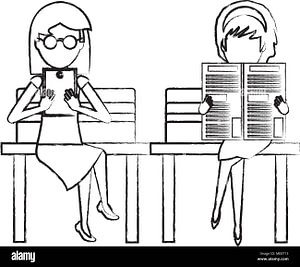
IS PRINT OR DIGITAL VERSION OF NEWSPAPER BETTER?
Dear Ms. Smartphone: My teen daughter plans to read a newspaper every day this summer. Her English teacher suggested she do this. The past school year was tough (tenth grade). The grades went down and she had difficulty making friends. But, shame on us- we did not clarify whether the print or digital version of the paper was better. My daughter insists on having a digital subscription that she will read on a phone or tablet. Good choice? I don’t agree at all. Maggy, the Mom
Dear Maggy: You are on to something “newsworthy” here. Over the past ten years, phones and teens have become inseparable, but they are not using them to learn about the bigger, outside world. The suggestion that your teen read a paper is a good one, but it loses many benefits if she insists on the digital version. It’s not about the technology, but rather how teens use it. Beginning and ending the day with a digital check-it is not a healthy behavior.
Teens average more than 8 hours a day on screens. Many never go off-line at all and end up sleeping with phones in their bed. The presence of the phone is thought to interrupt with sleep cycles, and using the phone ‘bookends’ the beginning and end of their waking day. During the teen age years kids “try on” different personalities and they post about them on social media. It’s complicated and I do simplify. But the issue, much discussed in mental health circles, is that teens are more likely to feel depressed and unstable when they come to depend on validation from outside sources like social media. They may feel mocked, left out, or inadequate.
Waking up and starting the day by reading a newspaper (in print) encourages a different course of action. Granted, newspapers also present a selected stream. But they strive to present a larger world, and report on events taking place elsewhere. Readers are invited to step outside themselves into something larger. It’s a different experience than say picking up the phone or tablet. There, algorithms put the reader at the center of a filter bubble with personally engaging topics and images. They also create hyper individualized ads to sell ideas and needs.
So, that brings me directly to your question of whether this new habit should be done digitally or on paper. The print edition should reduce the total amount of screen time your teen spends online, and also ensure that she does not get distracted by outside links and incoming notifications.
You have to factor in that digital readers tend to skim, not read in-depth. Some time ago I read that when the UK Independent went to a digital version online readers spent only 6 minutes a month. Before the digital version, the average print reader spend 37 to 50 minutes a day! Although newspapers like the NewYork Times like to boast about the number of digital subscribers, it’s about the advertising revenue- not the amount of time spent on the content. When it comes to comprehension and attention, your daughter should stick to the print version. That’s probably what the English teacher had in mind.
A related factor has to do with making friends, something you also mentioned. As Sherry Turkle makes clear in her 2015 book called “Reclaiming Conversation” we are losing the ability to talk with each other and share. She says that with less conversation we become less empathic, less connected, less creative, and less fulfilled. In this time of divided opinions and bifurcated politics it’s a rare person that can honor multiple viewpoints. Reading the editorials and letters-to-the editor should help reclaim this.
But, it’s not just about civics. Newspapers also have crossword puzzles, comics, sporting news, horoscopes, (even advice columns!). These are not as ‘sexy’ as social media, but they have the potential to extend time spent off-line.
One of the key things to think about as you set out on this change is to examine your own media habits. Does your household subscribe to one or more print papers, and are they spread out on the kitchen table or another visible spot? Alternatively, is the TV turned on in the background and are you multitasking on your phone too? It’s hard to ask your teen daughter to pick up a new habit if you do not model it for her. If you do, this new summer reading habit should extend all year.

